The Role of Artificial Intelligence in Art Creation
Artificial intelligence (AI) has emerged as a transformative force in the art world, fundamentally changing how artists conceptualize and create their work. One significant development in this intersection of art and technology is the utilization of machine learning algorithms, which can analyze vast amounts of data to generate unique visual compositions. These tools allow artists to explore new creative dimensions, expanding their artistic vocabulary and possibilities beyond traditional methods.
Various AI technologies, including generative adversarial networks (GANs), enable the creation of intriguing artistic pieces by amalgamating different styles and techniques. For instance, artists can input specific parameters or even existing artworks, and the AI will produce original pieces that resonate with their unique vision. This collaborative dynamic redefines the role of the artist, positioning them as curators and collaborators with technology rather than merely producers of art. As artists harness these capabilities, they can enhance their traditional skills, experimenting with new forms and expanding the boundaries of artistic expression.
However, the integration of AI into the art-making process introduces a range of ethical considerations. The question of authorship arises: when an AI generates a piece of art, who holds the rights to the creation? Moreover, there is concern over the potential for AI to replace human creativity altogether. While AI tools are designed to assist and augment the creative process, artists must navigate the fine line between utilizing technology as a tool and allowing it to overshadow their personal artistic voice. These challenges prompt necessary discussions regarding the future of art and technology, encouraging artists to examine their relationship with these advancing tools.
In conclusion, the advent of artificial intelligence offers exciting opportunities and significant challenges for the art world. As AI continues to evolve, it is crucial for artists to engage thoughtfully with this technology, balancing innovation with the preservation of their unique creative identities.
Pushing Creative Boundaries: My Personal Journey as an Artistic Director
As an artistic director navigating the dynamic landscape where art meets technology, my journey has been marked by a series of transformative experiences. The intersection of creativity and technology has not only redefined my artistic approach but has also expanded my vision for what art could represent in contemporary society. From the outset, I was captivated by the potential of technology to enhance creative processes. Early collaborations with technologists and engineers opened my eyes to how artificial intelligence could revolutionize artistic practices. These experiences laid the foundation for my belief that technology is not merely a tool but rather a collaborator in the creative process.
Throughout my career, I have spearheaded various projects that harness AI in innovative and unexpected ways. For instance, one memorable initiative involved creating an interactive installation that utilized AI to respond to audience input in real time. This project was a significant milestone, pushing the boundaries of traditional artistic expression. The freedom afforded by such technologies allowed me to explore new dimensions of audience engagement, transforming passive viewers into active participants. However, this journey has not come without challenges. Balancing artistic integrity while experimenting with emerging technologies necessitated a constant reevaluation of my creative ethos.
The lessons learned throughout this journey are invaluable. Embracing a technology-enhanced artistic methodology has necessitated collaboration with cross-disciplinary teams, which has enriched my creative strategies and artistic output. It has taught me that innovation does not solely reside in the artistic vision; it flourishes in a collaborative environment that encourages experimentation and exploration. As I continue to evolve as an artistic director, I remain committed to exploring this synergy between art and technology, understanding that this unique fusion holds the keys to uncharted territories of creative expression.

